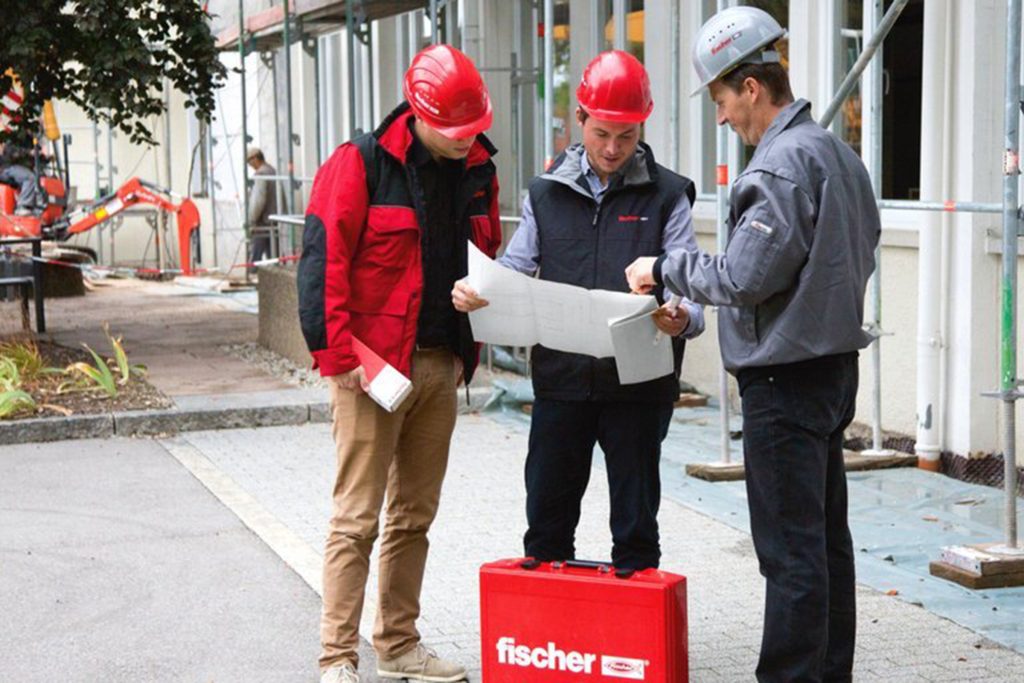Heightening Fixing Standards Locally
In the engineering profession all competent Engineers are bound by a set of codes. Locally, here in South Africa the South African Bureau of Standards (SABS) have a set of codes which must be adhered to, to ensure local compliance. The SABS is responsible for all the South African building codes. However, the body has only very recently created and adopted building codes pertaining particularly to the design and implementation of fixings and fasteners for use in concrete.
The fischer fixings SA team, along with other key players, have worked alongside the SABS to create and implement local building codes related directly to fixing and fastening technology. As a global leader in anchoring technology the fischer group has always prided itself on the safety critical nature of its anchoring solutions; and as the local agent for fischer in South Africa the team works tirelessly on championing safety. Late last year a decision was taken by prominent fixing and fastener suppliers to work collaboratively to shift outdated building codes currently being used in SA, towards implementing stringent and internationally recognised codes related specifically to the use of fasteners in concrete. This drive towards incorporating international building codes into our local SABS standards stems from what could happen in the event of an anchor failure i.e. property damage, people being hurt and in severe cases, fatalities.

To remedy this situation, fischer embarked on an industry-wide campaign to lobby the SABS to change the outdated building codes related to anchoring into concrete to be in line with internationally recognised, safety critical European Technical Assessment (ETA) codes. To achieve this goal, industry-wide buy-in for the adoption of these ETA codes was essential and all prominent fixing and fastener suppliers needed to promote the adoption. By working closely with prominent Academics who sit on various committees of the SABS, the campaign was both unbiased and included industry-leading experts buy-in. Professor Jan Wium and Professor Peter Day of the University of Stellenbosch, both prominent professors of Structural Engineering, were vital in lobbying for the adoption of ETA codes locally.
The team was assembled and now the process of lobbying for the adoption of the country’s first codes regarding the design and implementation of anchors could begin. There was a continuous back and forth between our in-house Engineers in SA and those of the fischer group in Germany, to ensure that the correct codes of the European Organisation for Technical Approvals (EOTA) were put forward to the various SABS sub-committees who were tasked with ruling on the adoption of the Codes in South Africa. The ETA tests are more stringent than those of the SABS, and are particularly applicable to anchors used in concrete, which will ensure that only the best materials, designs and installation practices will be used for anchor installations in South Africa.

By championing this project our inhouse technical team hoped to create something that never existed in our market before, a uniform code for the design and implementation of anchors. This would invariably lead to a safer approach in terms of the installation and design of anchors.
Early in March of 2021 we got the news that the Eurocode 2 Part 4: Design of Fastenings for use in Concrete was adopted by the SABS. The SANS 51992 – 4 2021 is South Africa’s first code for the design of fastenings for use in concrete, setting a previously unknown standard of safety. The SABS recently published these new codes and set the new minimum standards of safety in the industry.
From now on any South African Engineer or Architect working on a local project will have to align their work with these new ETA codes, with site Engineers and Contractors being responsible for the implementation of these standards.










